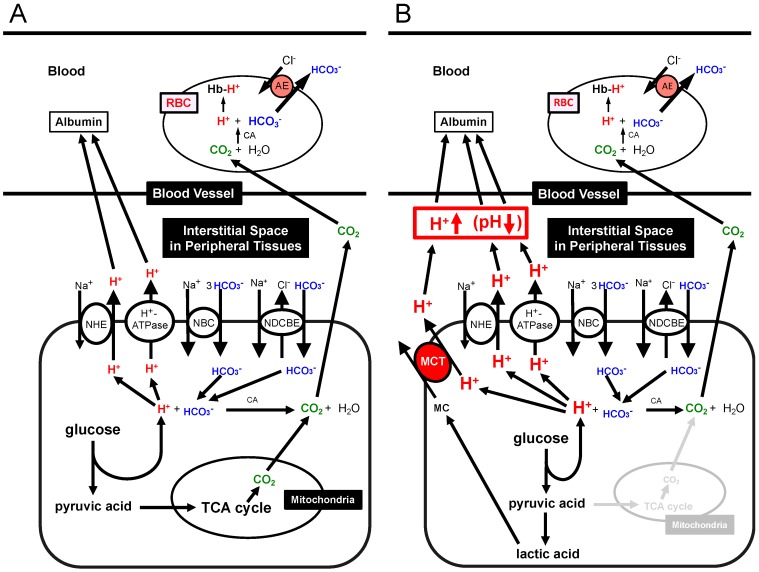Figure 3.
Production of H+ and CO2 and transporting systems of H+ and CO2 in peripheral tissues. (A) Production of H+ and CO2 and transporting systems of H+ and CO2 in peripheral tissues with ‘normal’ mitochondrial function: the glycolysis process produces H+ and TCA cycle generates CO2. (B) Production of H+ and CO2 and transporting systems of H+ and CO2 in peripheral tissues with ‘dysfunction’ of mitochondria. Much more amounts of H+ are produced via glycolysis in a case of mitochondrial dysfunction in order to produce the same amount of ATP as that with normal mitochondrial function. In a case of mitochondrial dysfunction, TCA cycle has no or little function, thus the required amount of ATP is mainly generated via glycolysis, leading to production of much more amounts of H+ and lactic acid than the normal case. Modified from Figure 2 in World J Diabetes 6(1): 125–135, 2015 [1].

